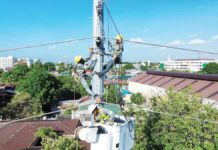
[av_one_full first min_height=” vertical_alignment=” space=” custom_margin=” margin=’0px’ padding=’0px’ border=” border_color=” radius=’0px’ background_color=” src=” background_position=’top left’ background_repeat=’no-repeat’ animation=”]
[av_heading heading=’DENR to plant over 3T has. with bamboo’ tag=’h3′ style=’blockquote modern-quote’ size=” subheading_active=’subheading_below’ subheading_size=’15’ padding=’10’ color=” custom_font=”][/av_heading]
[av_textblock size=” font_color=’custom’ color=’#0a0a0a’]
Monday, February 6, 2017
[/av_textblock]
[av_textblock size=” font_color=’custom’ color=’#0a0a0a’]
ILOILO City – Around 779,600 bamboos will be planted in 3,898 hectares (has.) of land in Western Visayas this year. The Department of Environment and Natural Resources (DENR) pushes for bamboo as alternative to wood.
Under the Bamboo Plantation Development Project (BPDP) of the enhanced National Greening Program (eNGP) from 2017 to 2022, DENR targets to plant bamboo on one million hectares of land across the country, and especially within the country’s critical watersheds.
In Western Visayas, according to Regional Director Jim Sampulna, bamboos will be specifically planted in the following:
* Aklan – 420 has.
* Antique – 650 has.
* Capiz – 1,328 has.
* Iloilo – 1,000 has., and
* Guimaras – 500 has.
From Jan. 31 to Feb. 2, DENR-6 conducted a training that equipped some 45 participants from people’s organizations and local government units with technical knowledge and skills on bamboo propagation, plantation development and rehabilitation.
Two days of the training were spent on actual field practicum in Maasin, Iloilo where bamboo is abundant.
After the training, Sampulna said, the participants will serve as trainers and partners of their local community for bamboo production, plantation establishment and management.
A bamboo is expected to fully grow at least in two to four years.
Sampulna said bamboos are “strong sequesters of carbon dioxide and good mitigating measures in soil erosion along creeks and rivers because of its strong holding capacity.”
Bamboos are also natural buffer for water course and serve as a social fence for communities living near lakes and other bodies of water, he added. (PNA)
[/av_textblock]
[/av_one_full]



